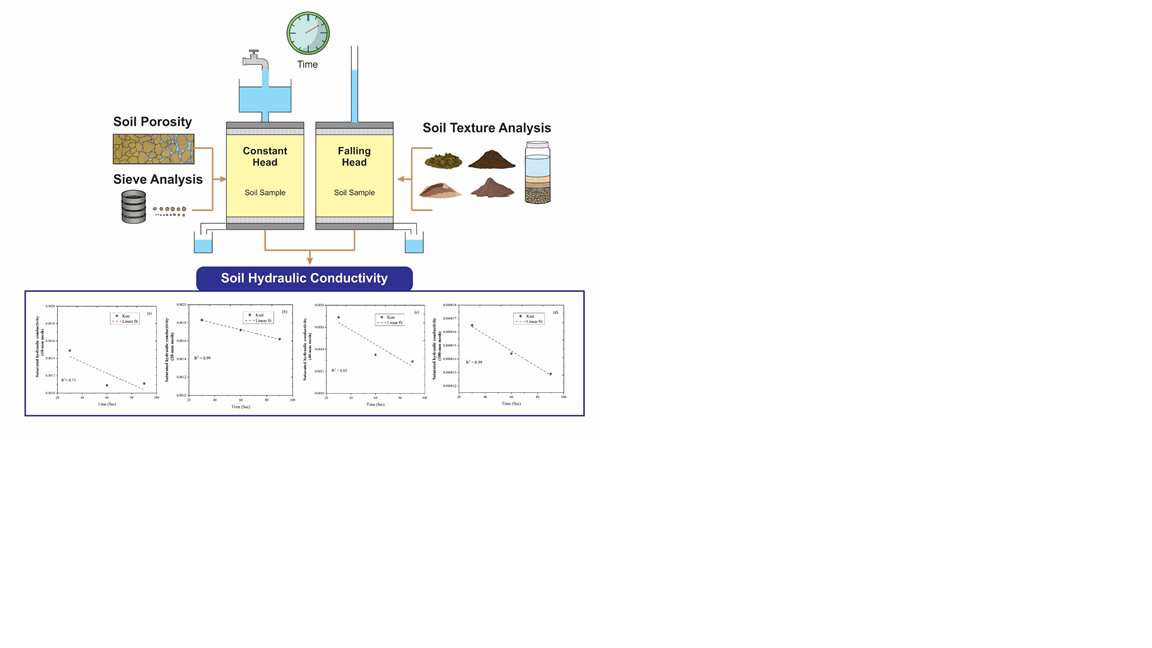
The purpose of soil hydraulic conductivity is to retain soil water contents, and soil water pressure. In this study investigates two different methods to understand the soil hydraulic conductivity of loam and clay soils. The present research conducted a laboratory experiment to measure the saturated hydraulic conductivity (Ksat) using two different methods: the constant head and falling head methods. The constant head method utilized a soil column with a length of 8.5 cm, and three soil columns were occupied with various soil texture classes (%). The study results demonstrate that the classification of soil texture was predominantly sandy loam with porosity varying between 35%, 43%, and 50% within the clay soil category. Furthermore, the average value of Ksat for the soil samples using the constant head method was 0.00142 cm/sec, while the falling head method provides average values of 0.00123, 0.00172, and 0.00144 for sandy loam and 0.0000146 cm/sec for clay soil. It is concluded that the falling head method indicates greater accuracy, particularly evident in the concurrent analysis of three samples. This study suggested that determination of Ksat through laboratory method is suitable due to cost effectiveness and simplicity.
Total file downloads: 34